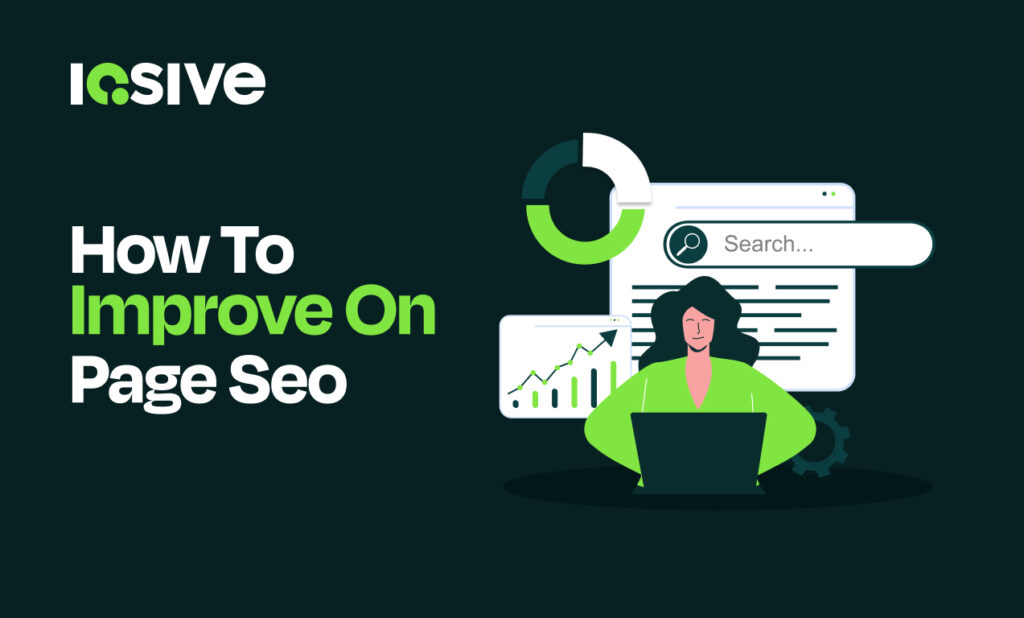Search engines evolve constantly, but one principle remains unchanged: content must serve users first. On-page SEO is the foundation of that principle. By optimizing the elements you directly control on your website, you can create pages that are discoverable, useful, and engaging. This guide explains proven strategies, actionable techniques, and best practices for improving on-page SEO in 2025.
Understanding the Fundamentals of On-Page SEO
What Is On-Page SEO and Why It Matters
On-page SEO refers to the process of optimizing web pages to improve visibility in search engines and enhance user experience. Unlike paid ads or link-building campaigns, it focuses on elements within your control: content, HTML tags, internal links, and technical structures. Well-executed on-page SEO not only increases rankings but also builds credibility and trust with your audience.
Key Differences Between On-Page and Off-Page SEO
On-page SEO deals with optimizing what’s on your site, content quality, structure, and user experience. Off-page SEO, on the other hand, is about external signals like backlinks, brand mentions, and authority. Both are essential, but without a strong on-page foundation, off-page efforts will struggle to deliver lasting results.
Essential On-Page SEO Ranking Factors
Optimizing Title Tags for Click-Through Rate
Title tags are one of the most visible elements in search results. They should be descriptive, concise (50-60 characters), and include primary keywords naturally. Action-oriented phrasing, numbers, or questions often increase click-through rates.
Crafting Compelling Meta Descriptions
While meta descriptions don’t directly influence rankings, they heavily impact user engagement. A well-written description (120–155 characters) can increase clicks by summarizing the value of your page. Use persuasive language and align it with search intent.
Using Header Tags for Structure and Relevance
Header tags (H1-H6) provide structure to your content, making it easier for both readers and search engines to understand. They should clearly signal the topic hierarchy and include relevant keywords without overuse.
Enhancing URL Structure for SEO Friendliness
Clean, descriptive URLs improve user trust and search visibility. Best practices include keeping them short, using hyphens, avoiding unnecessary parameters, and incorporating target keywords where appropriate.
Content Optimization Strategies
Writing for User Intent and Search Engines
Content should answer real user questions. Identify the “why” behind a search query, informational, navigational, or transactional, and align your writing to meet that intent.
Incorporating Keywords Naturally
Keyword placement should feel seamless. Include your primary keyword in titles, headers, introductions, and naturally throughout the content. Overuse can harm readability and rankings.
Improving Content Readability and Engagement
Readable content improves comprehension and reduces bounce rates. Use short paragraphs, bullet points, visuals, and clear subheadings. Tools like Hemingway or Grammarly can help measure readability.
Using Semantic SEO and LSI Keywords
Search engines now prioritize context. Including semantically related keywords (LSI terms) helps reinforce topical authority. For example, an article on “on-page SEO” might naturally include terms like “title tags,” “schema markup,” or “internal links.”
Technical Elements of On-Page SEO
Optimizing Image Alt Text and File Names
Images should be compressed for speed and described with keyword-rich alt text for accessibility and SEO. Descriptive file names also provide signals to search engines.
Implementing Schema Markup for Rich Results
Schema markup adds structured data, allowing your content to appear in rich snippets (e.g., FAQs, ratings). This improves visibility and click-through rates. Google’s Structured Data Testing Tool can help validate markup.
Ensuring Mobile-Friendliness and Core Web Vitals
Mobile-first indexing means Google primarily uses the mobile version of your site for ranking. Core Web Vitals, page speed, interactivity, and visual stability, are now key ranking factors. Optimizing for them enhances both SEO and user experience.
Internal Linking and Site Architecture
Building a Logical Internal Linking Strategy
Internal links distribute authority and guide users to related content. Anchor text should be descriptive and relevant. A logical structure helps both users and crawlers navigate your site effectively.
Distributing Link Equity Across Pages
Not all pages have equal authority. Linking from high-performing pages to those with growth potential spreads link equity, boosting visibility across your site.
User Experience Signals That Influence Rankings
Reducing Bounce Rate with Engaging Content
A high bounce rate can signal that users aren’t finding what they need. Solutions include stronger introductions, clear formatting, and addressing user intent quickly.
Improving Dwell Time Through Multimedia and Layout
Dwell time increases when content is visually appealing and interactive. Adding videos, infographics, or interactive tools encourages visitors to stay longer and engage deeper.
Common On-Page SEO Mistakes to Avoid
Keyword Stuffing and Over-Optimization
Overloading content with keywords makes it unreadable and signals manipulation. Google penalizes such practices. Focus on clarity and natural flow.
Duplicate Content and Thin Pages
Duplicate or low-value content can dilute rankings. Each page should serve a unique purpose, with substantial, original insights. Consolidate or expand weak pages instead of letting them linger.
Best Practices and Actionable Checklist
On-Page SEO Audit Tools You Can Use
Tools like Ahrefs, SEMrush, Moz, and Screaming Frog help identify technical issues, missing tags, and optimization opportunities. Free options include Google Search Console and PageSpeed Insights.
Step-by-Step Optimization Workflow
- Conduct a keyword and intent analysis.
- Audit title tags, meta descriptions, and headers.
- Improve content readability and depth.
- Optimize technical factors like images and speed.
- Strengthen internal linking.
- Test, track, and refine regularly.
Measuring and Tracking On-Page SEO Success
Key Metrics to Monitor in Google Analytics
Monitor bounce rate, average session duration, pages per session, and conversion rate. These metrics reveal how users interact with your content.
Using Google Search Console for Performance Insights
Search Console provides data on impressions, click-through rates, and keyword performance. It also identifies crawl errors, indexing issues, and opportunities to improve visibility.
FAQs:
Q1: What are the most important on-page SEO factors for 2025?
The top factors include high-quality content, optimized title tags, meta descriptions, mobile performance, Core Web Vitals, and strong internal linking.
Q2: How can I optimize meta tags to improve click-through rates?
Use action-driven language, align with search intent, include keywords naturally, and keep titles under 60 characters with descriptions under 155.
Q3: Does internal linking still impact SEO rankings?
Yes. Internal linking distributes authority across your site, improves crawlability, and enhances user navigation, all of which support rankings.
Q4: How do I write SEO-friendly content without keyword stuffing?
Focus on user intent, use keywords sparingly in natural contexts, and add semantically related terms to build depth and context.
Q5: What tools can I use to perform an on-page SEO audit?
Popular tools include SEMrush, Ahrefs, Moz, Screaming Frog, and Google Search Console for free auditing and monitoring.
Q6: How does schema markup improve on-page SEO?
It helps search engines understand your content better and can display enhanced snippets in SERPs, leading to higher visibility and clicks.
Q7: What’s the difference between on-page SEO and technical SEO?
On-page SEO focuses on content and elements visible to users. Technical SEO deals with backend factors like site speed, crawlability, and indexing.
Q8: How often should I update my content for better rankings?
Update high-value pages every 6–12 months. Refresh outdated stats, add new insights, and ensure content aligns with evolving user intent.









